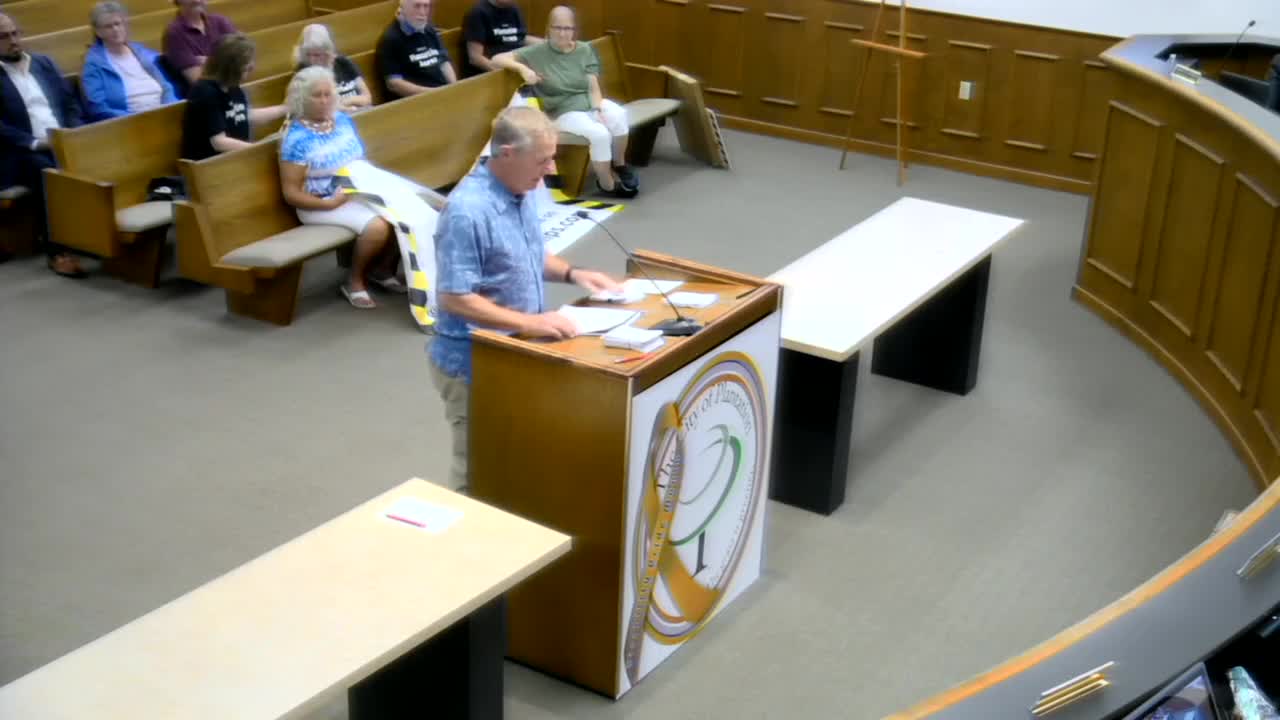Residents Demand Action to Remove Controversial Speed Bumps
August 07, 2024 | Plantation, Broward County, Florida

This article was created by AI summarizing key points discussed. AI makes mistakes, so for full details and context, please refer to the video of the full meeting. Please report any errors so we can fix them. Report an error »

In a recent city council meeting, residents voiced strong opinions regarding the speed bumps installed on 11th Place, with a significant majority expressing a desire for their removal. A local resident reported that a campaign to gather feedback on the speed bumps yielded a remarkable 30% response rate from 495 contacted homes, with 152 responses predominantly opposing the bumps. This feedback was presented alongside a request for the city council to cancel the entire traffic calming program, citing a belief that approximately 70% of voters would support such a move.
The resident emphasized the need for police enforcement as a more effective means of ensuring road safety, referencing a 2022 study by the National Highway Traffic Safety Administration that highlighted the positive impact of high-visibility enforcement on reducing dangerous driving behaviors. The resident also suggested that the city could benefit financially from increased speeding ticket revenue, which could help sustain ongoing enforcement efforts.
Contrasting opinions emerged during the public comments segment. Barbara Law, a long-time resident of 11th Place, argued for the necessity of speed bumps, particularly due to the presence of three nearby schools. She advocated for alternative bump designs that could better serve the community's safety needs. Her husband, Don Law, while expressing his dislike for speed bumps, acknowledged their role in traffic management and called for a more effective solution, such as a roundabout, to enhance safety and property values.
Frank Hamad, another resident, supported the speed bumps, noting a decrease in traffic speed since their installation. He urged the council to focus on broader safety measures rather than solely relying on ticketing for revenue.
The council is expected to review the feedback and consider the implications of the residents' concerns, balancing the need for traffic safety with community preferences. The discussions reflect a broader debate on effective traffic management strategies in residential areas, highlighting the complexities of community safety and urban planning.
The resident emphasized the need for police enforcement as a more effective means of ensuring road safety, referencing a 2022 study by the National Highway Traffic Safety Administration that highlighted the positive impact of high-visibility enforcement on reducing dangerous driving behaviors. The resident also suggested that the city could benefit financially from increased speeding ticket revenue, which could help sustain ongoing enforcement efforts.
Contrasting opinions emerged during the public comments segment. Barbara Law, a long-time resident of 11th Place, argued for the necessity of speed bumps, particularly due to the presence of three nearby schools. She advocated for alternative bump designs that could better serve the community's safety needs. Her husband, Don Law, while expressing his dislike for speed bumps, acknowledged their role in traffic management and called for a more effective solution, such as a roundabout, to enhance safety and property values.
Frank Hamad, another resident, supported the speed bumps, noting a decrease in traffic speed since their installation. He urged the council to focus on broader safety measures rather than solely relying on ticketing for revenue.
The council is expected to review the feedback and consider the implications of the residents' concerns, balancing the need for traffic safety with community preferences. The discussions reflect a broader debate on effective traffic management strategies in residential areas, highlighting the complexities of community safety and urban planning.
View full meeting
This article is based on a recent meeting—watch the full video and explore the complete transcript for deeper insights into the discussion.
View full meeting